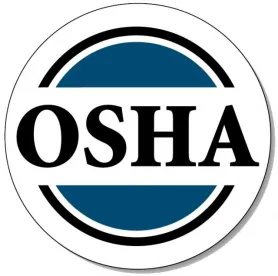Raising the maximum fine 400 percent for failing to timely report a work-related severe injury and increasing the likelihood for on-site inspections of employers who report a serious injury are among changes reflected in new guidance released by the Occupational Safety and Health Administration.
Under 29 CFR §1910.39, employers must report an in-patient hospitalization, amputation, or eye loss to OSHA within 24 hours of the incident. Under previous guidance, the recommended maximum fine for failing to comply was $1,000, not including reductions for small businesses and other allowances. The new recommended unadjusted penalty is $5,000. However, as before, the new guidelines permit area directors to boost the fine to $7,000 to achieve the “necessary deterrent effect” for such reporting violations, which will still be classified as “other than serious.” The penalty for failure to report a fatality or three or more in-patient hospitalizations within eight hours and other work-related events remains unchanged, according to the agency. OSHA issued 627 citations for reporting violations in fiscal year 2015, with fines averaging $1,445, Bloomberg BNA reported.
The new guidance also gives area offices the green light to conduct “monitoring inspections” of employers who were not inspected after making initial contact with OSHA to report a serious injury, but by writing or phone did promise to conduct an internal investigation and correct hazards. OSHA refers to such cases as “rapid response inquiries” (RRI). The guidance promises employers that OSHA will not use the company’s internal investigation report to cite hazards discovered during the in-house review, as long as workers are not exposed to a serious hazard and “diligent steps to correct the condition” are being taken.
“OSHA may conduct monitoring inspections of closed RRIs based on a randomized selection of closed investigations,” said the guidance, which was released March 9 but was dated March 4. “The monitoring inspection is to ensure accuracy in the reporting and will be limited to an inspection of the previously reported condition.”
OSHA’s updated directions do not change the practice of segregating reports into one of three categories based on factors such as injury severity, the age of the injured workers, whether the workers were temporary, and the worksite’s inspection history. Category 1 is reserved for reports that require an inspection; category 2 reports may result either in an inspection or an RRI; and category 3 reports are RRI only. The new memorandum additionally offers more guidance for area offices to use when deciding whether to launch an initial inspection, such as providing updated questions inspectors may ask when talking with employers.
This replaces guidance OSHA issued in December 2014, just before the reporting rule took effect on January 1, 2015. The revisions are based both on the experience of field staff with the new reporting requirements over the past year and OSHA’s evaluation of the injury reports then, the agency said. While the guidance is intended for OSHA staff, its directions provide employers with insight into complying with the rule and deciding what information to share with the agency. Determining what to release must be done with care to avoid potential legal and regulatory liability down the road. Our experienced attorneys are available to assist in making those determinations.




 />i
/>i
